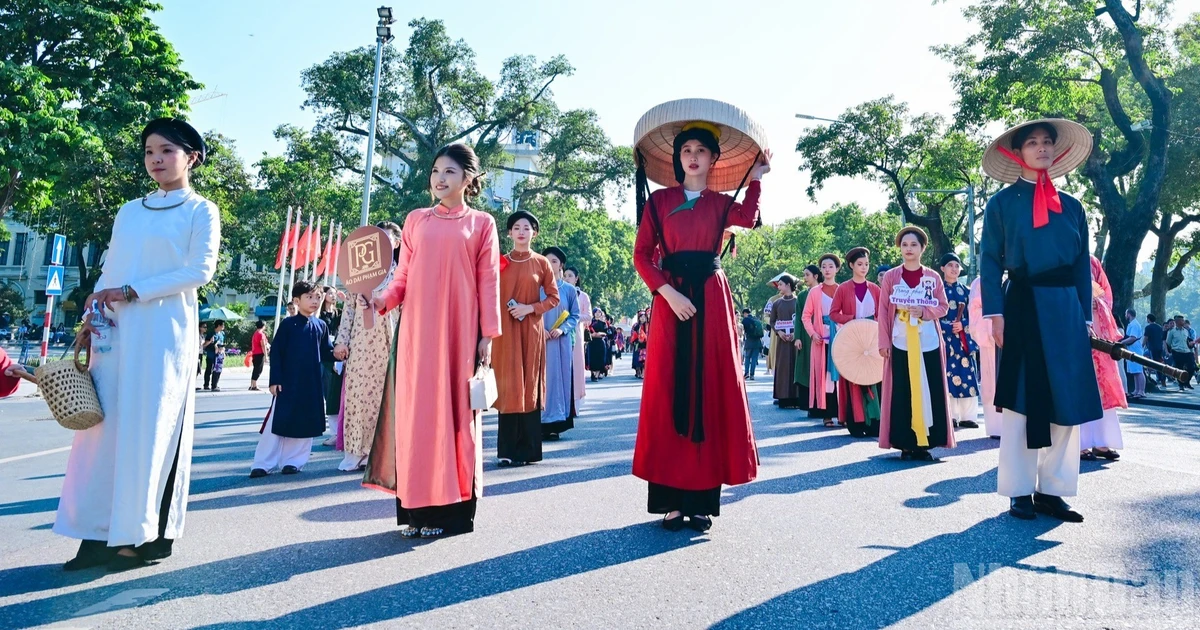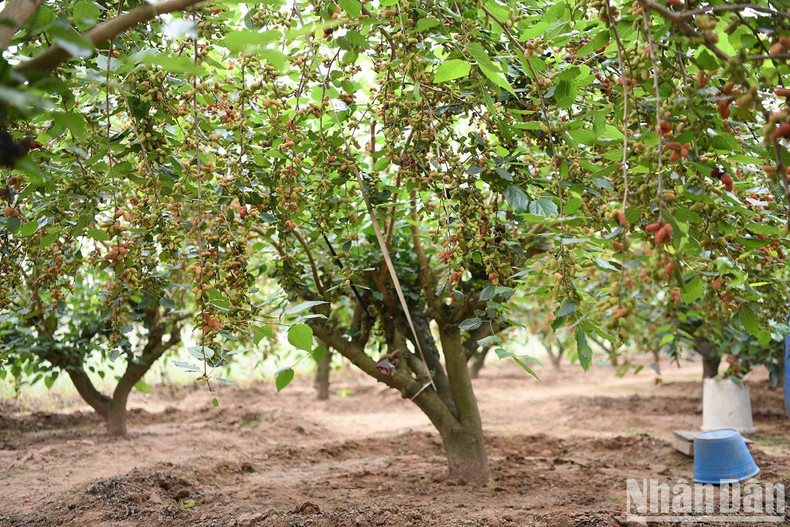 |
| Currently, Hiep Thuan Commune has nearly 6 hectares of mulberry orchards, with around 60 households cultivating mainly in Hiep Thuan hamlets 1, 2, and 3. |
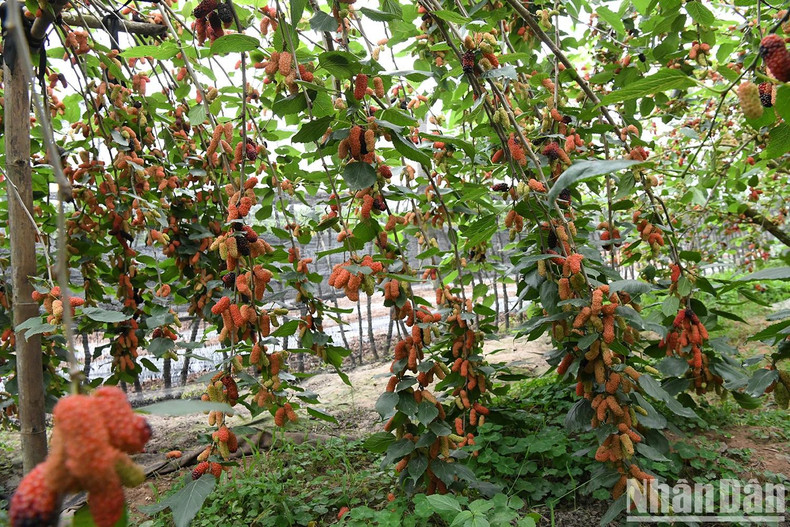 |
| Thanks to fertile riverside soil and favourable weather, the mulberry plants thrive and yield consistently. This year, with little frost and moderate rainfall, fruit quality has been rated highly, with farmgate prices at the start of the season ranging from 15,000 to 20,000 VND per kilogram. |
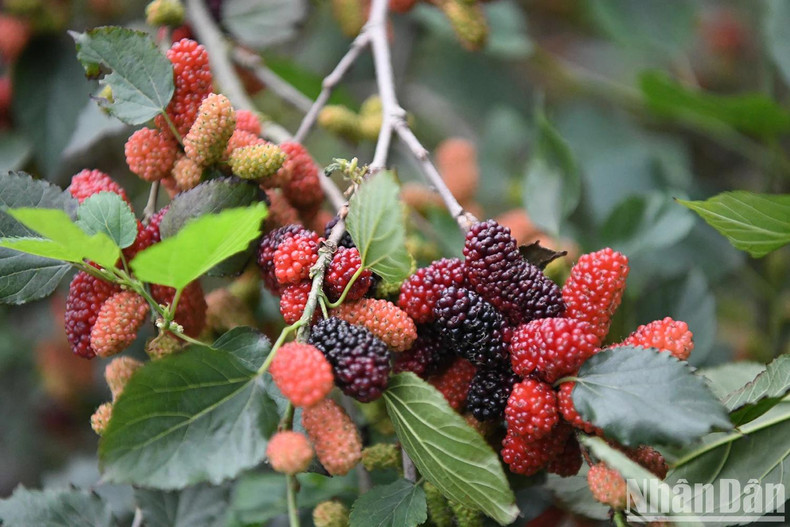 |
| Ripe mulberries are now in full season in Hiep Thuan. |
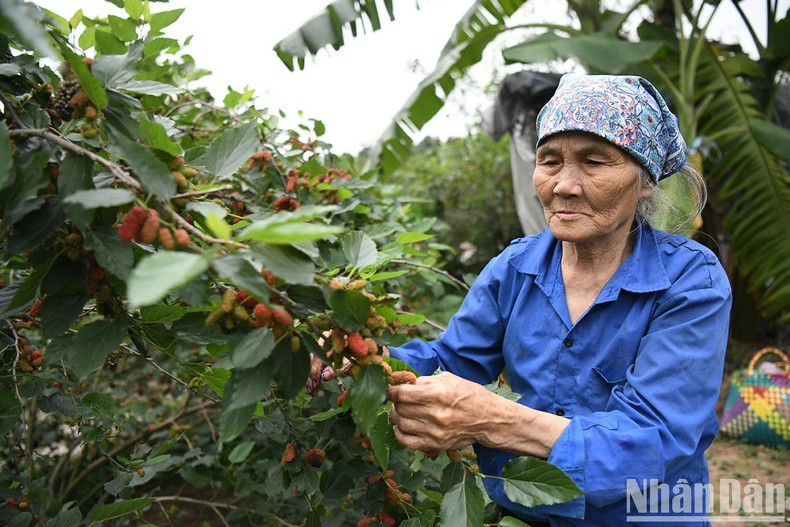 |
| Nguyen Thi Te, 75, from Hiep Thuan Hamlet 2, shared that her family has been cultivating their garden for more than ten years. The fruits began ripening 15 days ago, and so far they have sold around 1.5 tonnes of fruit. With about a month left in the harvest, she expects to earn over 50 million VND this season. |
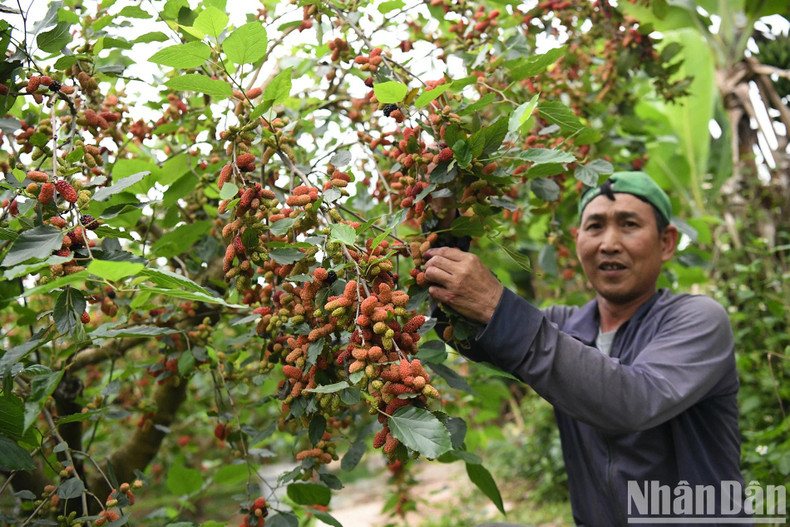 |
| Not stopping at just growing and selling the fruits, several households have also developed "eco-garden" models. Nguyen Van Lan, 55, explained that careful maintenance two months before harvest is the key to heavy fruiting and yields three to four times higher income than rice farming. In addition to selling the fruit, the eco-tourism model also brings in around 20% extra income for his family. |
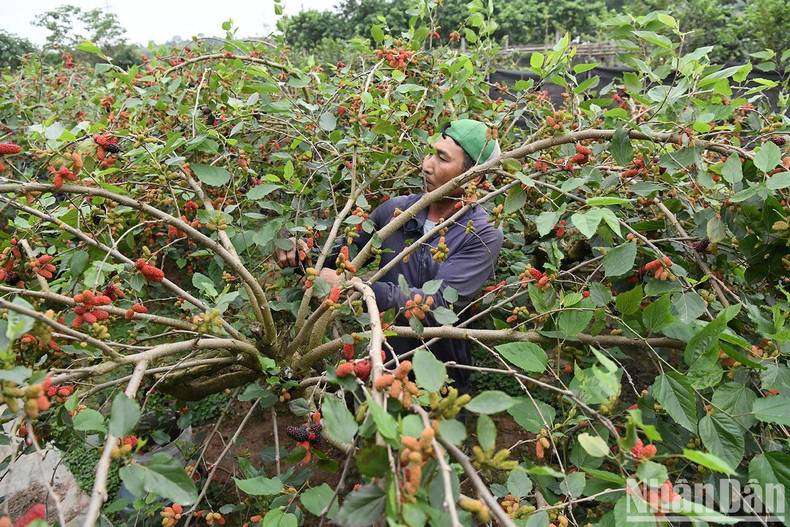 |
| The well-cared-for Mulberry trees at Lan’s orchard provide lush shade. |
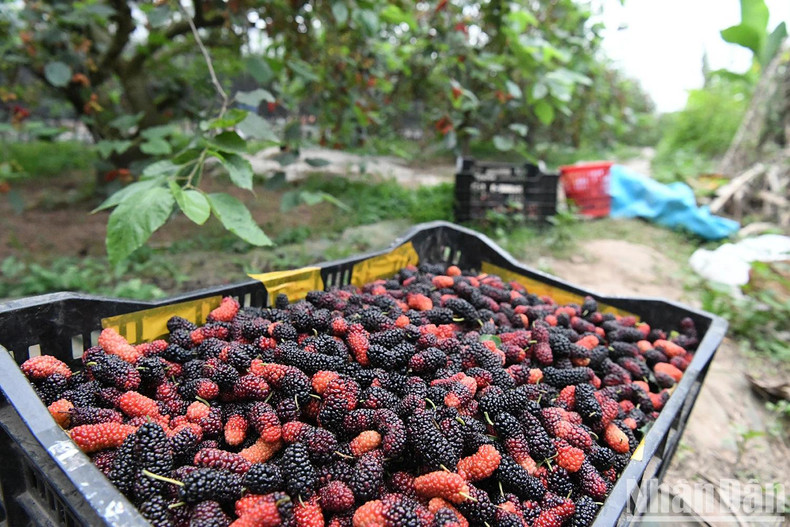 |
| Fresh mulberries are harvested right from the gardens in Hiep Thuan. |
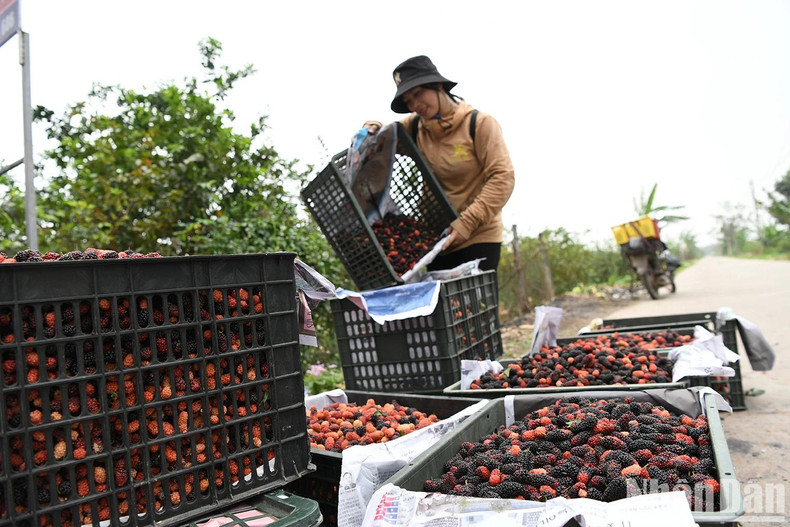 |
| The Phuc Tho mulberry market is currently thriving. Nguyen Thi Hau, a vendor at Phuc Tho Market, said that at the start of the season, up to seven tonnes of mulberries can be sold each day through local traders. |
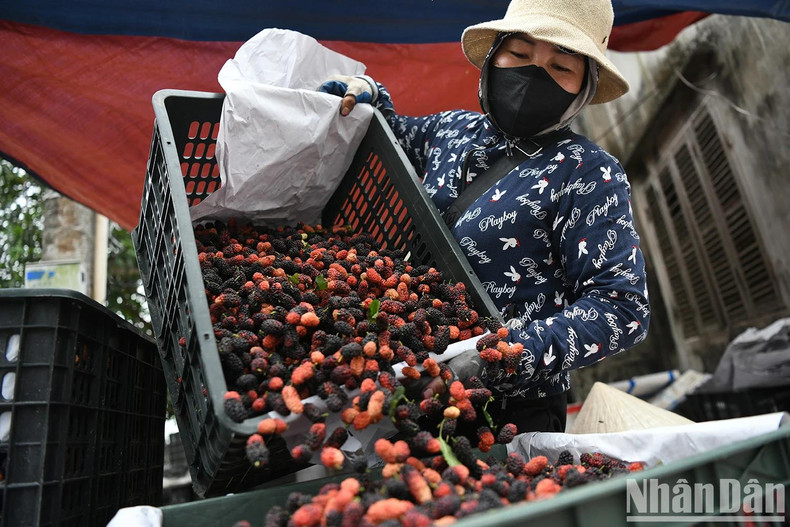 |
| Meanwhile, To Hoa Phuong from Ba Vi, who has been in the mulberry trading business for nearly ten years, noted that Phuc Tho mulberries are beautiful fruit with a pleasantly sweet taste, and are easy to preserve, making them highly popular in the market. Consumer demand for this type of produce is very high. |
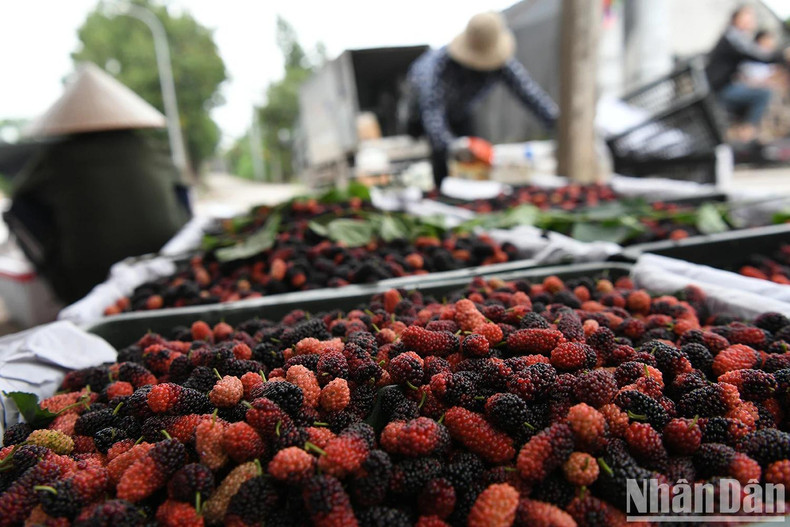 |
| The mulberry season is not only a time of harvest but also a “golden season” for both growers and traders. |
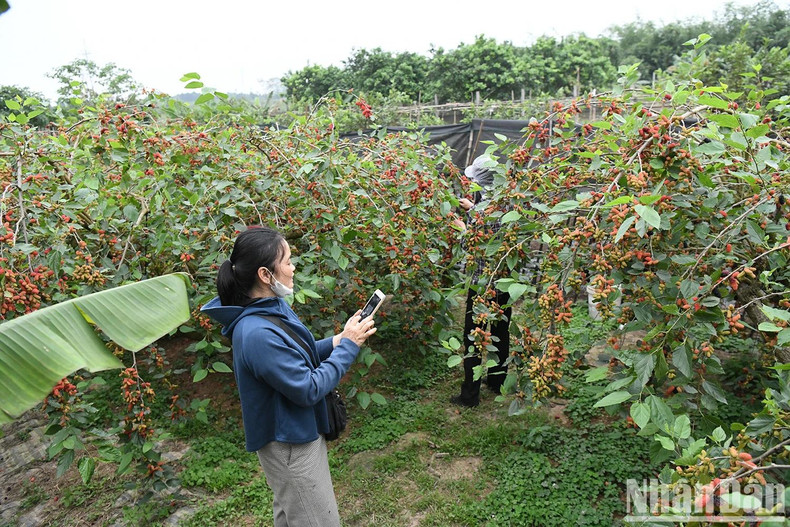 |
| With sustainability in mind, many households in Hiep Thuan have adopted organic farming practices, using agricultural by-products and combining with experiential tourism to enhance product value. The mulberry tree not only brings income but also serves as a cultural bridge, connecting agriculture with local heritage. |
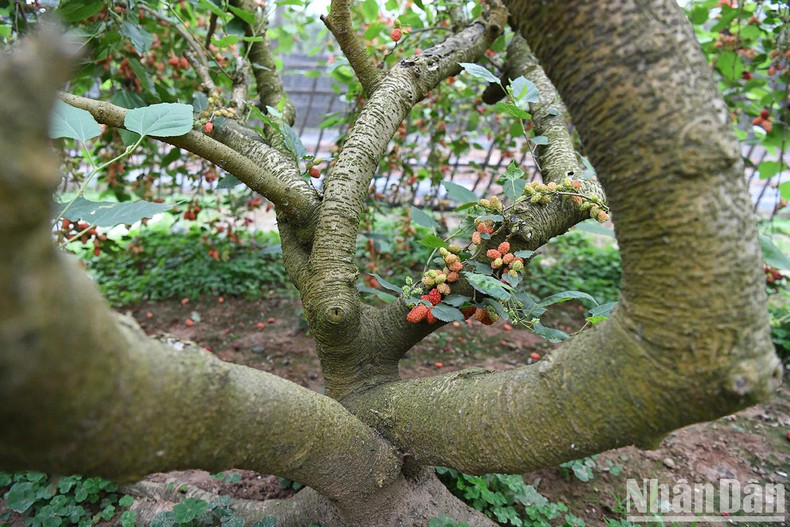 |
| Given its great potential, Phuc Tho mulberries deserve investment in brand building, geographical indication labelling, and participation in the clean agricultural value chain. With the right positioning, mulberries can undoubtedly become a specialty of Hanoi, contributing to the development of a green and sustainable rural economy. |
NDO
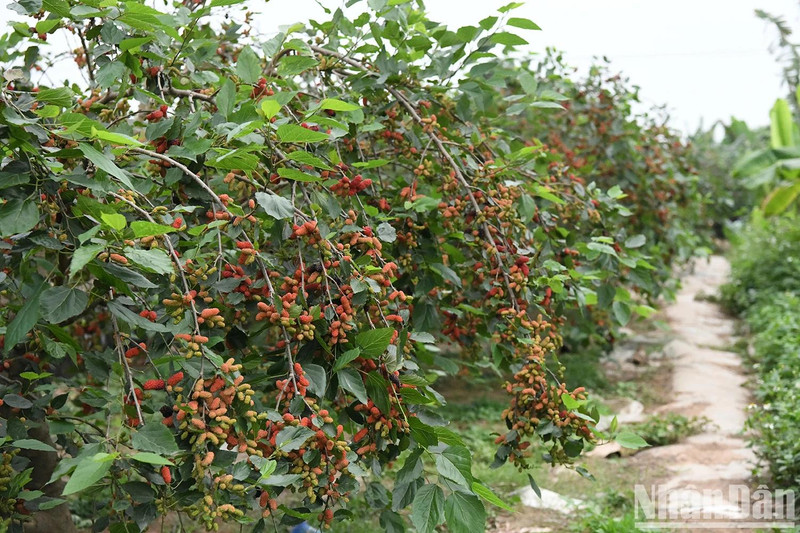











![[In Pictures] President Luong Cuong receives Governor of Kaluga Province](https://en-cdn.nhandan.vn/images/5992a12dd6e78b9bfb434962ff18307331f51c4c3a3e5fcfcd42f0234766d9c450eca9ae12f5f315618dafdb06cbe64c344b9404599dcafdc84ae4ddd5452acc/251125-ctn-3.jpg.webp)



